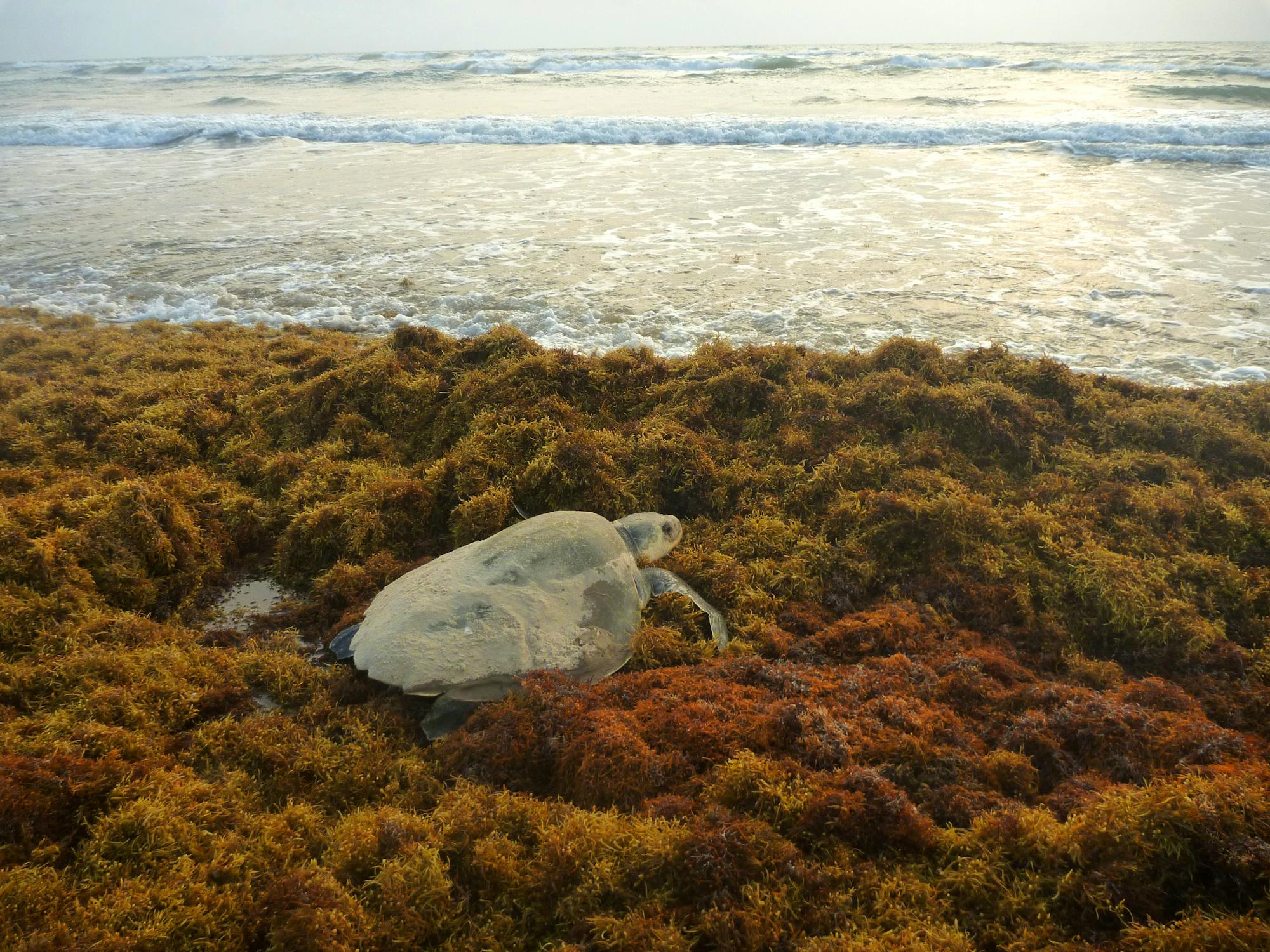In the early 1960’s, after sitting on a desk for more than a decade, a movie made by an amateur cameraman in 1947 was shown to the world. What Andres Herrera had captured was the great “arribada,” or arrival, of Kemp’s ridley sea turtles on beach in Rancho Nuevo, Mexico. In just that one day in 1947, as many as 40,000 Kemp’s ridley sea turtles were seen nesting on a single beach.
When researchers examined the footage, they noticed that 90 percent of the nests were being destroyed by local egg harvesting. This spurred the Mexican government to enact protections in 1966 that prohibit the capture of sea turtles and collection of their eggs. Extirpated from the United States in the 1950s, the U.S. government listed the Kemp’s ridley as “endangered” in 1970 under a precursor to the Endangered Species Act (which was enacted three years later). By 1978, a joint effort between the U.S. and Mexican governments established a second Kemp’s ridley colony at the Padre Island National Seashore in Texas.
As sea turtles spend so much time out at sea, we are always learning more about their migration patterns, behavior, and population ecology. What is clear are the many and significant threats to their recovery, including fisheries bycatch (especially in shrimp trawl nets), pollution, habitat destruction, and climate change. Conserving sea turtles requires persistence, patience, and a willingness to support the species throughout its entire life cycle. This is Defenders at our best. From turtle egg to adulthood, Defenders is there every step of the way to protect sea turtles and their habitat.
Habitat destruction is an onshore and offshore problem for adult turtles and hatchlings. Artificial lights can disrupt female sea turtles’ ability to nest by causing false crawls, where they return to the ocean without digging a nest and laying their eggs in the sand. Even where baby sea turtles successfully hatch, artificial lighting can disrupt their journey towards the sea by disorienting them and leading them away from the ocean, causing them to die from predation or other causes. Defenders helps improve coastal-construction policies so that jetties and sea walls do not prevent sea turtles from nesting, promote responsible lighting along nesting beaches, and encourage local residents, visitors and businesses to remove trash that attracts raccoons and other predators that devour eggs and hatchlings.
President Trump’s infamous border wall could also affect nesting grounds for the Kemp’s ridley in southeastern Texas. Defenders is working to protect wildlife and critical habitat in the borderlands from such destruction, including the Laguna Atascosa National Wildlife Refuge. New border wall was threatened in the refuge, extending to its sandy beaches on the Gulf of Mexico, until Defenders and partners secured a Congressional prohibition on construction within the reserve. Unfortunately, threats persist with the potential development of three new liquid natural gas (LNG) refineries in Brownsville, Texas, which may also disrupt the species’ reproduction and nesting activities. Defenders is currently challenging federal permitting for these facilities.
Offshore, Kemp’s ridley sea turtles were seriously affected by the 2010 Deepwater Horizon catastrophe and continue to suffer from spotty enforcement of requirements for turtle excluder devices in shrimp trawl fisheries. We are fighting offshore drilling around the country, protecting wildlife, habitats, ecotourism and other economic benefits of clean waters, clean beaches, and healthy coastal communities.
A more erratic climate has also created new challenges for sea turtles that are swept by the Gulf Stream into the Atlantic Ocean. During the warm months, some sea turtles venture as far north as Nova Scotia to forage, making their way south again as winter begins to set in. It is not uncommon for some of the southbound migrants to venture into Cape Cod Bay and become trapped there when temperatures suddenly drop and the colder waters slow metabolism, stunning or killing the animals. The number of cold-stunned turtles washing ashore has increased recently to an average of 600 per year, well above the annual average of 200 in the last decade. In 2018, more than 400 sea turtles were found washed ashore frozen in Massachusetts, many of them endangered Kemp’s ridley sea turtles.
Climate change is also affecting sea turtle reproduction. The temperature of the sand at sea turtle nests determines the sexes of baby turtles, with warmer sand producing more females. A warming world, with warmer sands, is beginning to skew the natural ratio of males to females in sea turtle populations.
Endangered species recovery takes time and resources—but the results can be incredibly rewarding. Thanks to continued intergovernmental cooperation, Kemp’s ridley sea turtle nesting has slowly increased in southeastern Texas over the past few years, and Kemp’s ridleys have been documented to nest as far east as Archie Carr National Wildlife Refuge in Florida. Other species of sea turtle continue to break annual records for nesting.
Kemp’s ridley and other sea turtles still face many challenges ahead, but Defenders and our partners are committed to continue protecting these species and all of our nation’s imperiled, irreplaceable wildlife.










